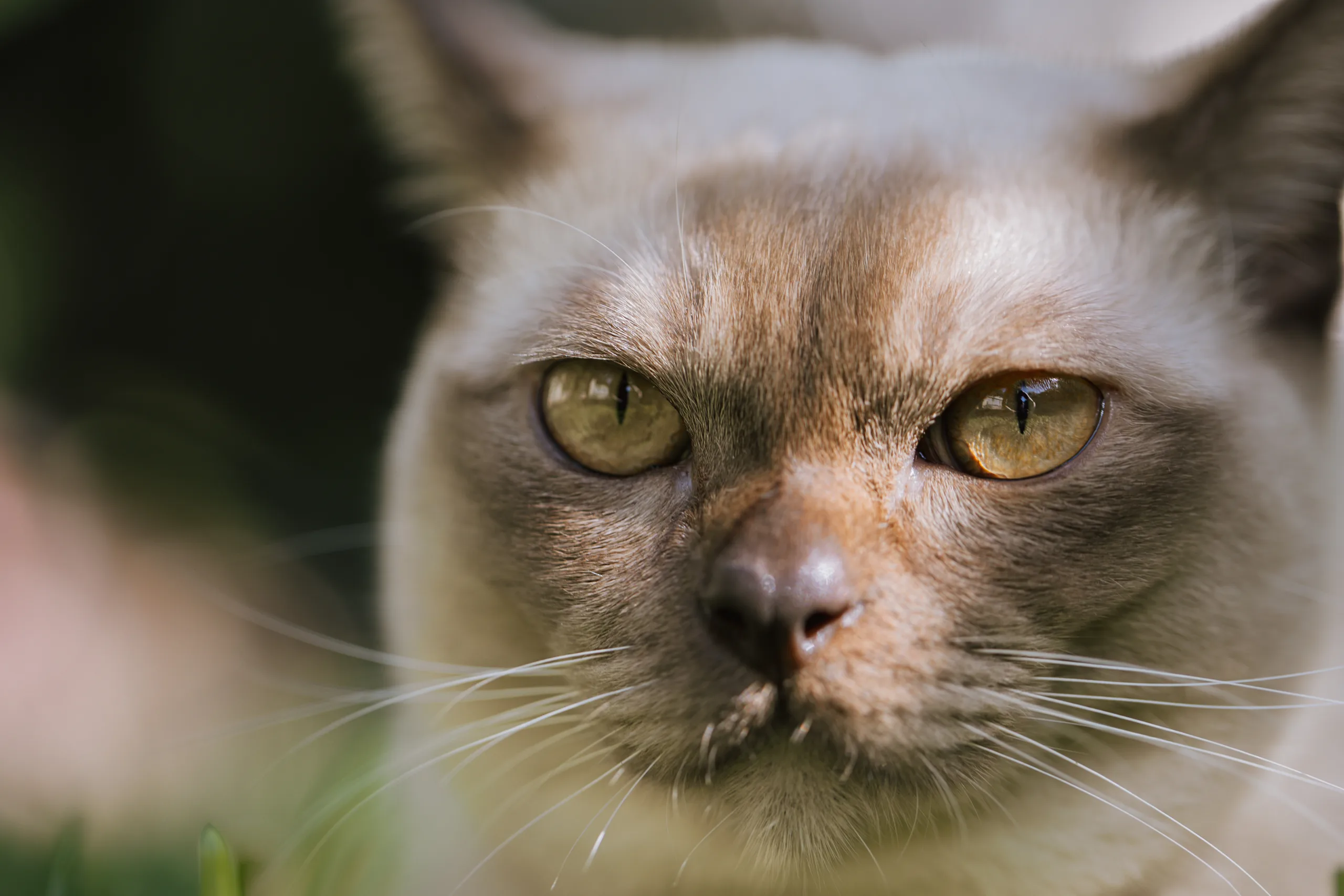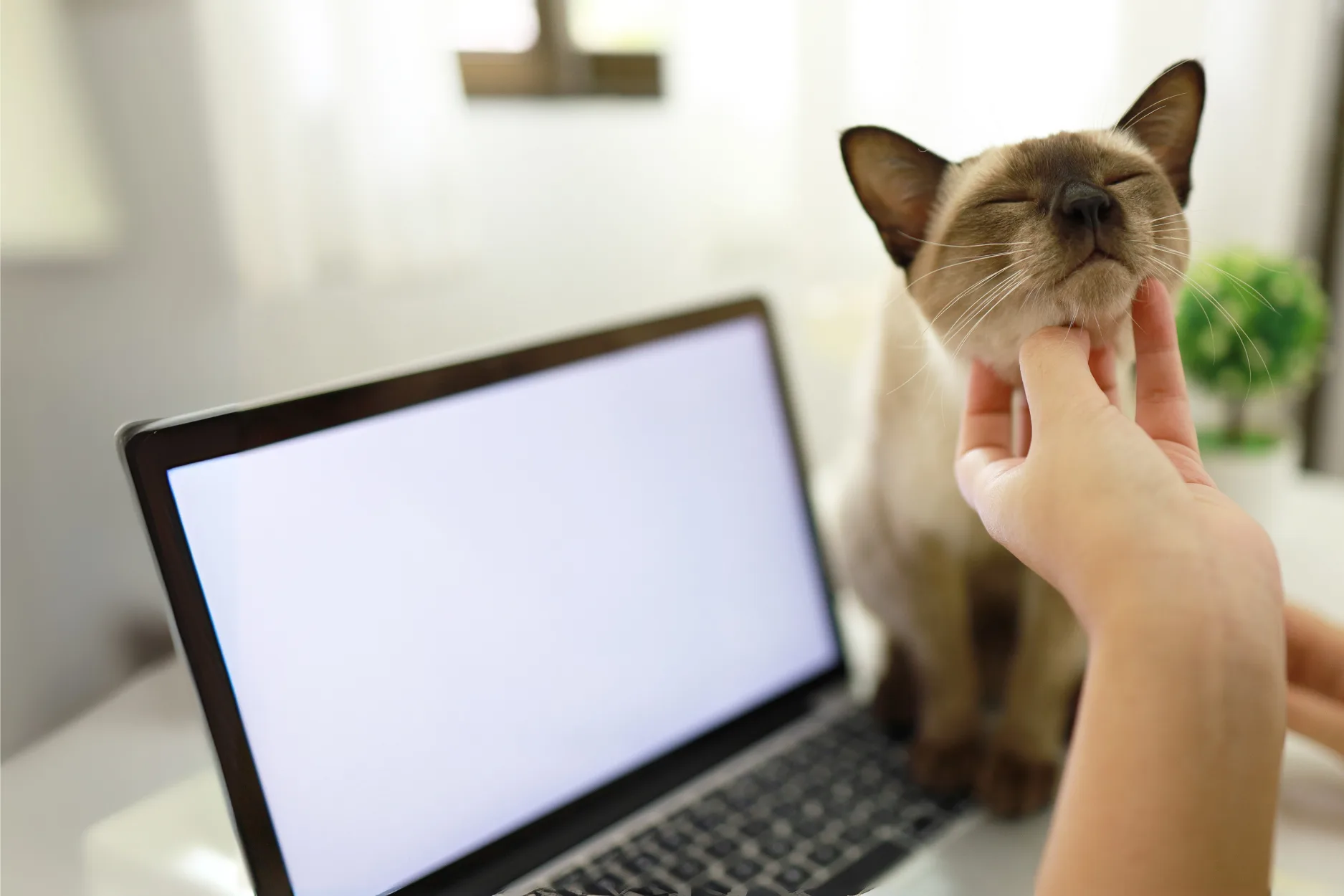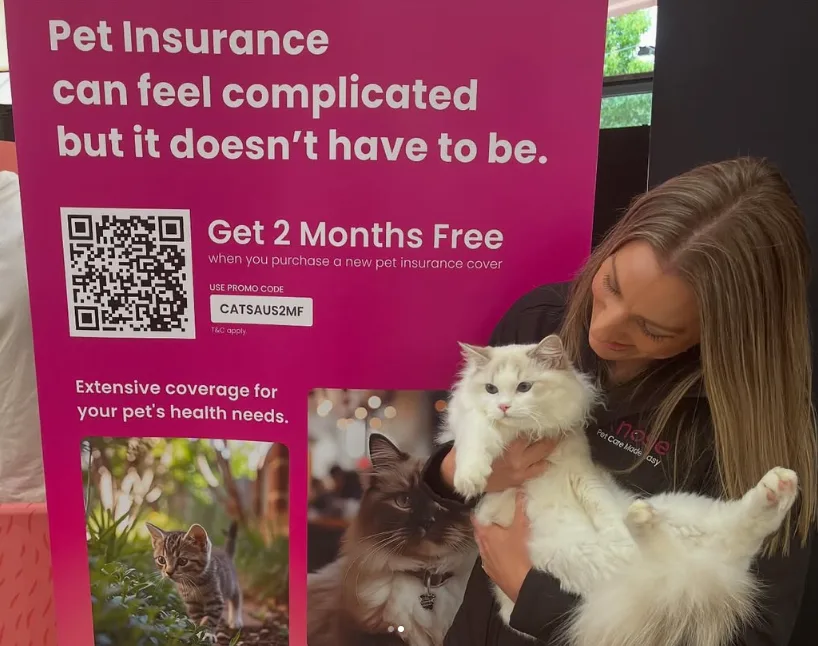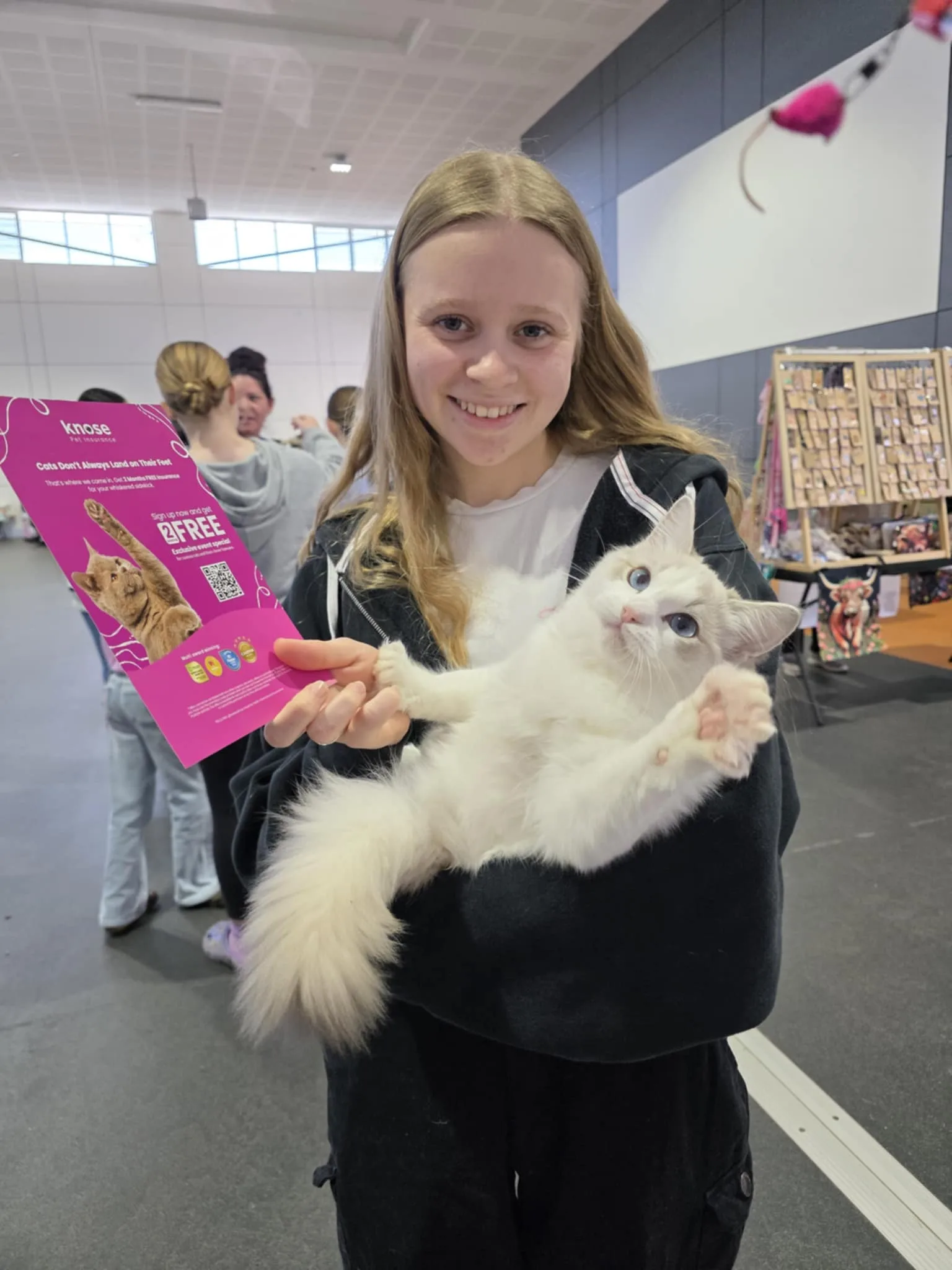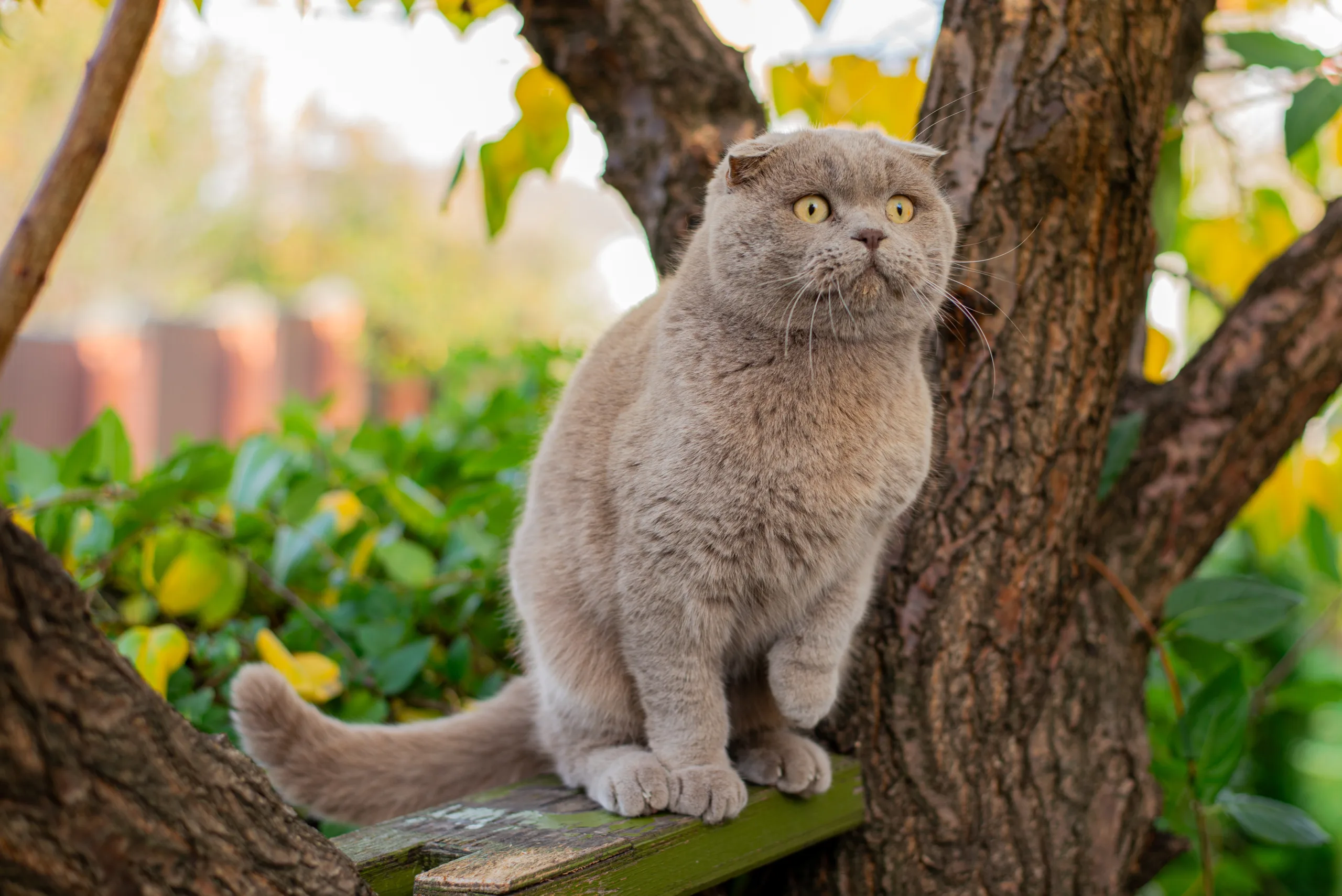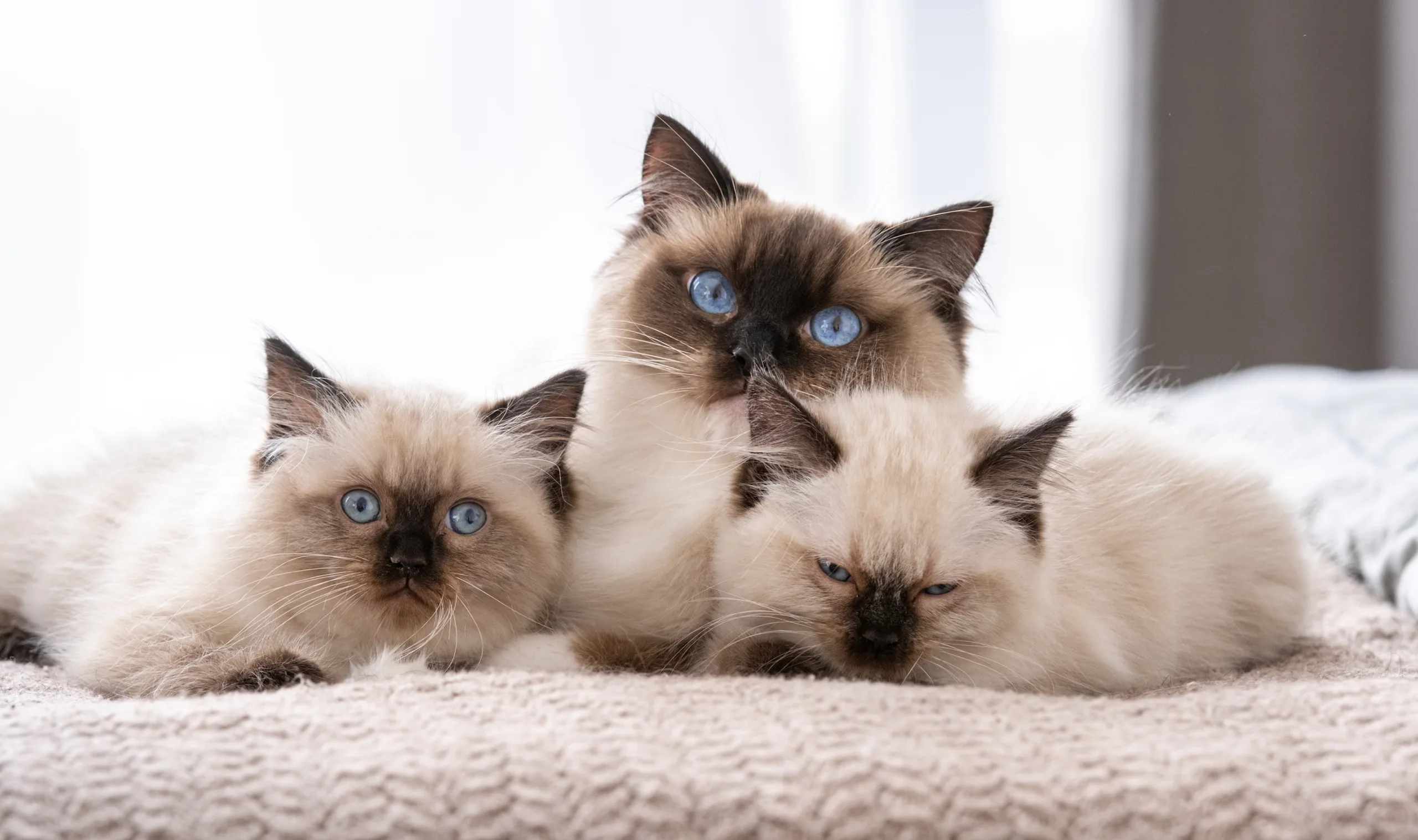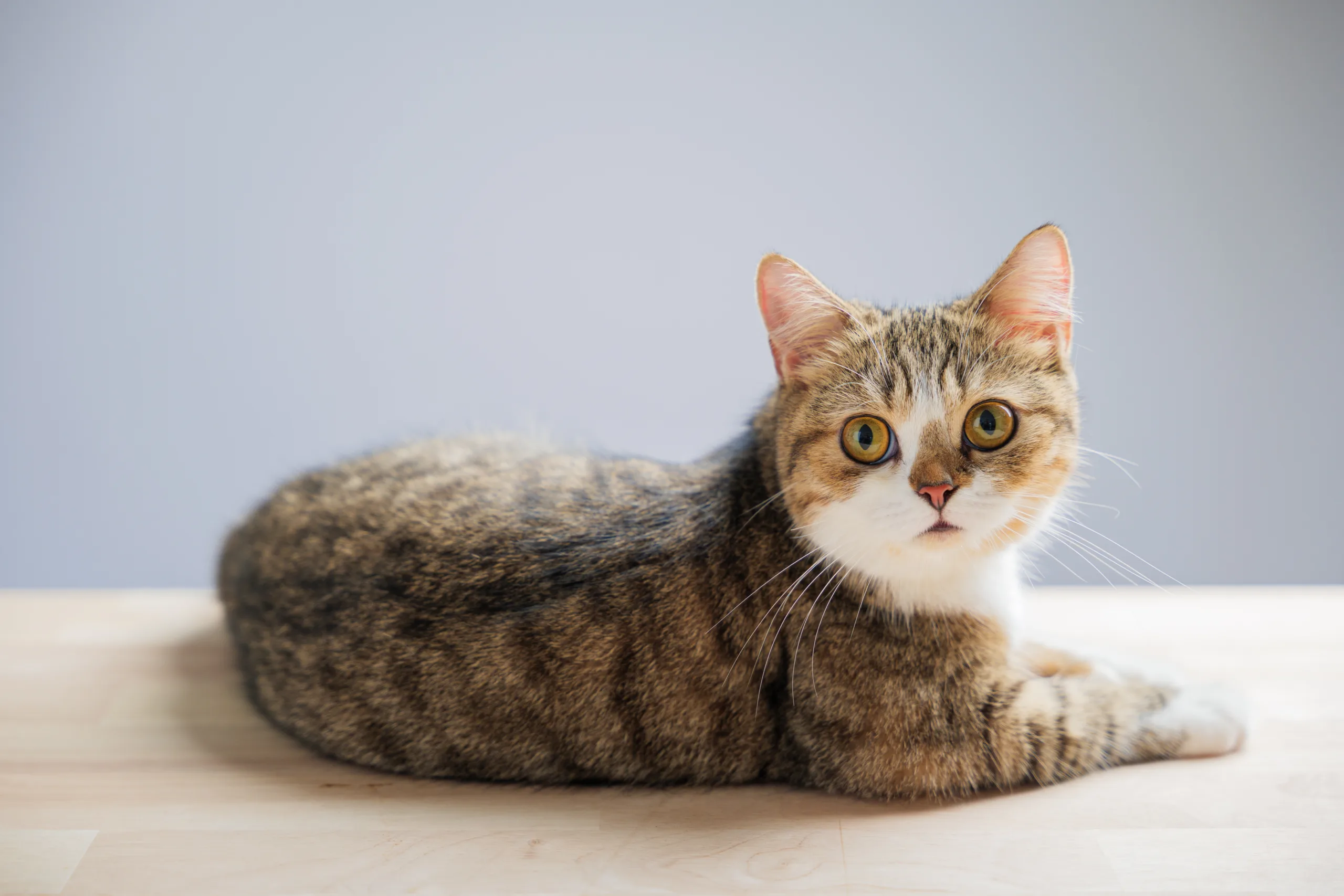Here at Knose, we’ve seen all kinds of cats walk (or strut) through our care.
The fluffy, the feisty, and even the frequently-at-the-vet. Some breeds just come with a bit more… fine print.
Sofa sweethearts or curious climbers, Australia’s most popular cat breeds are full of charm and a few breed-specific conditions.
We’ve rounded up the top 5 most beloved cats Down Under, plus the common cat illnesses you should keep an eye out for.
Affectionate, playful, and always up for a cuddle, Burmese cats are social butterflies in sleek fur
5. Burmese Cat
Friendly and playful, these social butterflies are often dubbed the extroverts of the feline world.
We wouldn’t be shocked if they think the universe revolves around their whiskers. Vets even call them “extremely loving, people-focused, and dog-like in behaviour.”
Burmese cats do have health quirks to watch out for. Genetically, they’re more prone to Diabetes Mellitus. Some tell-tale signs include weight loss, increased thirst, and more frequent urination.
And if your cat is looking a little wobbly or can’t hold their head up, it could be hypokalemic polymyopathy. It used to be tricky to diagnose, genetic testing now makes it easier to identify carriers.
A healthy diet and weight can prevent diabetes, while muscle issues might benefit from supplements.
💡Your vet knows best! Also, good cat insurance never hurts, especially since cats are convinced they have nine lives.
4. Domestic Longhair Cat
Think of Domestic Longhairs as Domestic Shorthairs who went to a fancy salon. Also known as moggies, they’re a blend of many breeds with no official pedigree, but plenty of charm.
Not built for Aussie heat, their lush coat’s better off indoors with fans, brushes, and the occasional ice cube in the water bowl.
Built strong and born to thrive, Domestic Longhairs are tough cookies. They’re generally healthy and low-risk for hereditary conditions.
Fleas, worms, and UTIs may try their luck, but regular vet check-ups usually keep things in check.
💡 But the healthiest moggie isn’t invincible, so don’t get too relaxed! Health issues like cancer or feline leukemia can still sneak up. We can help you stay ready for those unexpected vet visits.
3. British Shorthair Cat
Think royalty, but teddy bear and low-key. British Shorthairs are usually calm, quiet, and confident. They’re affectionate cats but won’t cling or climb your curtains.
A sunny spot to nap is enough for them, reappearing just in time for dinner. Their plush coats need a weekly brush to manage the fluff and the furniture fallout. And yes, to keep them looking like the aristocrats they are.
Behind the calm demeanor, they have a few health issues tucked under all that fur. The sneaky Hypertrophic Cardiomyopathy (HCM) is a heart condition where the muscle thickens and struggles to pump properly.
Symptoms are often untouched food, longer naps, or odd breathing. Regular wellness exams can help catch it early.
💡 They might not be as flat-faced as Persians, but some British Shorthairs come with breathing baggage. Those chubby cheeks and compact snouts are to blame, sadly. Something to keep your eye (and insurance) on!
2. Ragdoll Cat
Say hello to the gentle giants of cats. They’re large, fluffy, and famous for going completely limp when picked up (hence the name).
Known for their blue eyes, they love a chill home life. If you’re all about quiet nights in, you’re already their favourite human. They also have a tendency to follow you around like a shadow.
Just like British Shorthairs, HCM affects Ragdolls as well. If diagnosed, your vet might cut the salt in their meals and switch to a heart-friendlier diet.
Along with heart health, their coats need some love too. They have fur that tangles easily and sheds without regular brushing. They’re much happier indoors, preferably away from the Aussie sun.
Don’t forget to pay attention to the litter box. These fluffballs are prone to Bladder Stones which can get serious real fast.
The signs are pretty easy to spot like frequent toilet trips, straining to go, or pee outside the litter box. Urinalysis, bloodwork, and X-rays help your vet diagnose the issue.
💡 This is when having pet insurance really pays off!
Australia’s classic all-rounder — resilient, diverse, and full of personality, no two are quite the same!
1. Domestic Shorthair Cat
Australia’s champion and for good reason! These friendly, fuss-free legends are nearly found in every second household.
They come in every colour and combo possible and personalities to match. The best low-maintenance companions, equally happy lounging indoors or exploring outdoors.
With their love for naps and anything edible, they can easily tip into chonky territory. Obesity can lead to diabetes, joint problems, and heart disease.
A little portion control helps and daily exercise can do wonders for their overall health.
Another issue to look out for is Inflammatory Bowel Disease (IBD). It can turn your easy-going cat to a fussy eater. This is also when vomiting and diarrhoea rear their ugly heads.
💡 Stick to a healthy diet and talk to your vet if anything seems out of place.
Insure Early With Knose, Stress Less
Cats may behave like they have nine lives, but when it comes to their health, a little planning goes a long way. Many breed-specific conditions and cat health problems aren’t covered if they’re diagnosed before you take out a policy.
💡 That’s why it pays to start early. Knose Pet Insurance is here to help cover the expected, the unexpected, and the “they ate what?!”
We can’t stop cats from knocking things off shelves, but we can help with rest. We’re with you for every breed, quirk, and cuddle.
##
Post by Knose Pet Insurance in collaboration with Ranzel
Ranzel is a perpetually caffeinated logophile whose work revolves around pets. She’s an advocate for the furred, feathered, and finned. A cat mum by fate, and a full-time sitter to an ever-growing crew of adorable strays.
